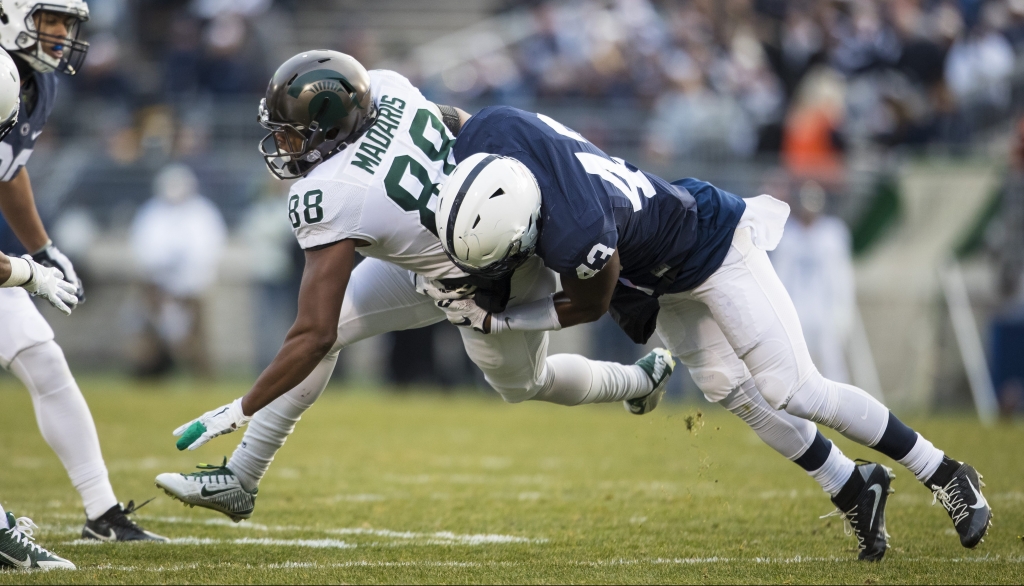-
Tips for becoming a good boxer - November 6, 2020
-
7 expert tips for making your hens night a memorable one - November 6, 2020
-
5 reasons to host your Christmas party on a cruise boat - November 6, 2020
-
What to do when you’re charged with a crime - November 6, 2020
-
Should you get one or multiple dogs? Here’s all you need to know - November 3, 2020
-
A Guide: How to Build Your Very Own Magic Mirror - February 14, 2019
-
Our Top Inspirational Baseball Stars - November 24, 2018
-
Five Tech Tools That Will Help You Turn Your Blog into a Business - November 24, 2018
-
How to Indulge on Vacation without Expanding Your Waist - November 9, 2018
-
5 Strategies for Businesses to Appeal to Today’s Increasingly Mobile-Crazed Customers - November 9, 2018
Fed raises interest by 0.25 points
The U.S. Federal Reserve has again pulled the trigger, raising official interest rates and threatening more hikes in 2017.
Advertisement
The Federal Reserve raised official US interest rates for the first time in a year and signalled an accelerated pace of further rate increases, in a repositioning of monetary policy that has one eye on a growing economy and another squarely on the incoming Donald Trump presidency.
Additionally, the dollar surged after the Fed’s interest rate decision. Its expectation of three rate increases in 2017 is up from two from its forecast three months ago.
The Fed’s move to raise its key rate will mean modestly higher rates on some loans.
This quarter of a percentage point (0.25) increase (to a range between one-half [0.50] and three-quarters-of-one-percent [0.75] ) is still low by historic standards.
US Treasuries yields rose as far as 2.61 per cent, having already risen more than 0.7 per centage point since Trump was elected last month.
European stocks also rose, gaining 1 percent on Thursday as bank stocks increased. The jump in 2-year Treasury paper was the biggest daily rise since early 2015 as it topped 1.29 percent. It was down 1.4 percent so far for the week.
U.S. inflation data released on Thursday showed consumer prices moderated in November, but the underlying trend continued to point to firming inflation pressures amid rising rents, which could support more interest rate increases from the Fed next year. Assuming greater clarity on the Trump administration’s fiscal policy, financial markets can have greater confidence in the Fed’s economic projections and expectations of future rate increases.
Asked about the possible interference in monetary policy by the incoming president, Yellen said she is “a strong believer in the independence of the Fed”. Just look at a year ago, says Rich Taylor, client portfolio manager at American Century.
Treasury yields declined on Friday, moving off multiyear highs, as demand for USA debt increased following an sharp Federal Reserve-inspired selloff earlier in the week. But we just don’t know what they are.
Higher interest rates typically make the dollar stronger, which can put pressure on commodities that are pegged to the currency, such as gold.
As a result, the Fed expects that the federal funds rate is likely to remain at low levels for some time.
According to ratings agency Standard & Poor’s, Asia-Pacific companies will have to repay nearly $1 trillion of debt over the next four years, with more than half of it priced in USA dollars. It foresees economic growth reaching 1.9 percent this year and 2.1 percent in 2017, slightly more optimistic than it projected in September.
COMMODITIES: Crude oil rose 70 cents, or 1.4 percent, to $51.60 per barrel in NY. Brent crude, the global standard, rose 80 cents to $54.80 a barrel in London. The yellow metal fell over one percent in the prior session. The currency was down 1.4 percent for the week.
ASIA’S DAY: Japan’s Nikkei 225 index dipped and then recovered lost ground, gaining 0.1 per cent to 19,273.79. US gold futures for February delivery settled down 2.9 percent at $1,129.80, showing a stronger decline as it had settled positive on Wednesday prior to the Fed statement. Wholesale gasoline fell almost 2 cents to settle at $1.53 a gallon.
At 12:20 p.m. ET, gold futures are down 3.1%, or $36.25 an ounce, to $1,127, the lowest level since January. Silver rose 0.6 percent, and copper fell 0.7 percent.
The dollar climbed to 116.37 Japanese yen from 115.23 late Tuesday.
Advertisement
John Panin, center, works with fellow traders on the floor of the New York Stock Exchange, Thursday, Dec. 15, 2016. The British pound fell to $1.2596 from $1.2667.





























